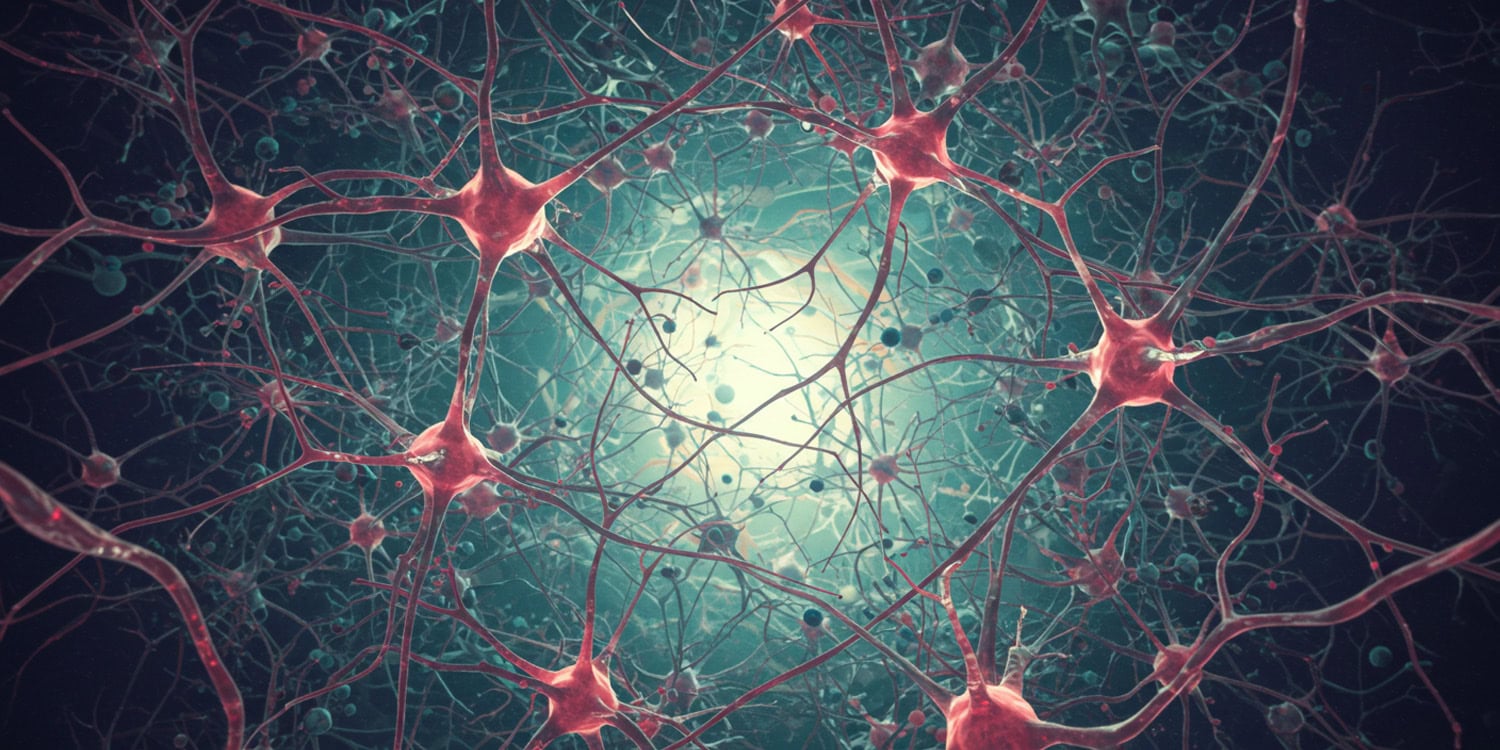Navigating uncertain situations is a fundamental part of life for all animals. When faced with a choice between a predictable outcome and a gamble, individuals often consistently lean towards either safety or risk.
A new study published in Nature Neuroscience reveals how a tiny brain region known as the lateral habenula may guide our decisions when facing risk. In a series of experiments using mice, researchers discovered that specific neurons in this area show unique activity patterns that predict whether an animal will choose a safe or a risky option—even before the animal makes its move. The findings suggest that the lateral habenula works together with parts of the hypothalamus to influence decisions based on individual risk preference.
Understanding how the brain makes decisions when faced with uncertainty is a long-standing question in neuroscience. Animals, including humans, are constantly making choices where the outcomes are not guaranteed. For example, an animal might choose to eat a familiar food source that always provides a small amount of food, or it might venture to a new location that could potentially offer a much larger meal, but also carries the risk of finding nothing at all, or even encountering danger.
Scientists have observed that when given such choices between a sure thing and a gamble, most individuals consistently favor one approach over the other. Some are naturally more cautious and prefer the safe option, while others are more adventurous and favor the risky choice. This preference is not random; it is a stable characteristic of an individual.
While we know that brain regions involved in value and motivation are likely involved, the precise brain mechanisms that underpin this consistent risk preference have remained unclear. One brain region that has drawn attention in this context is the lateral habenula. This small but important area is known to be involved in processing value information and has been linked to negative emotions and aversion.
Previous research hinted at its role in economic decision making, as inactivating the lateral habenula in rats disrupted their ability to make advantageous choices in risky situations. However, it was unknown exactly what kind of information the lateral habenula processes during risky decision making, and which brain connections are important for this function. The new study aimed to address these gaps in our knowledge by examining the activity of the lateral habenula and its connections during a risk-based choice task in mice.
“When I started my PhD in 2017, I came across a study which had been published three years earlier investigating risky decision-making in rats. It showed that when rats are faced with making a decision between a safe (1 food pellet) and a risky (4 or 0 food pellet with changing probability ratios) option they adapt their choices based on the maximum reward likelihood,” explained study authors Dominik Groos and Fritjof Helmchen of the University of Zurich.
“But when a tiny brain region called the lateral habenula was pharmacologically inactivated, the rats completely lost the ability to make favorable decisions and chose at random instead. However, what information is encoded in the lateral habenula during risky decision-making, how this information is implemented and what synaptic inputs make relevant contributions have remained unclear. After implementing a similar task for head-fixed mice, I started addressing these questions during my PhD.”
To investigate the brain basis of risk preference, the researchers designed a task where mice could choose between two options: a “safe” option that always provided a medium-sized sugary reward, and a “risky” option that offered either a large sugary reward or a very small reward, each with a certain probability. Importantly, the average reward value was the same for both options, meaning neither option was inherently better in terms of total reward over time.
The mice were trained to perform this task while their heads were gently held still, allowing for precise monitoring of brain activity. Over several days of training, the researchers observed that individual mice developed stable preferences. Some mice consistently chose the safe option, becoming classified as “risk-averse,” while others predominantly selected the risky option, becoming “risk-prone.” A small group of mice showed no strong preference, categorized as “risk-neutral.”
These preferences remained consistent even when the locations of the safe and risky options were swapped, indicating that the mice had truly learned to associate each option with its respective reward profile, rather than just preferring a specific location.
“Mice engage in risky decision-making and show distinct risk preferences,” Groos and Helmchen told PsyPost. “The majority (about 2/3) of animals is risk averse, meaning that they strongly prefer the safe over the risky option, while fewer animals (less than 1/3) are risk prone, preferring the risky option, and very few frequently switch between options across testing sessions (risk neutral individuals). This individual preference was stable across the entire testing period (multiple weeks). Stable risk preferences and a prominent risk aversion in the majority of individuals is also observed in humans.”
To understand what was happening in the brain during these choices, the researchers used a variety of advanced techniques. First, they used a method called two-photon calcium imaging to monitor the activity of individual neurons in the lateral habenula over extended periods. This allowed them to track how the activity of specific brain cells changed as the mice were making their decisions. They found that the activity of many neurons in the lateral habenula changed just before the mice made a choice, during what the researchers called the “deliberation period.”
These activity patterns were different depending on whether the mouse was about to choose its preferred option (safe for risk-averse mice, risky for risk-prone mice) or its less preferred option. Some neurons showed higher activity when the mouse was about to choose its preferred option, while others showed lower activity. These neurons were termed “risk-preference selective cells,” indicating that their activity reflected the individual risk preference of the mouse even before the action was taken.
To understand where this risk-preference information in the lateral habenula might be coming from, the researchers investigated the brain regions that connect to it. They used a technique called anatomical tracing to map the inputs to the lateral habenula across the entire brain. This revealed that several brain regions project to the lateral habenula, including areas involved in motivation and decision-making like the orbitofrontal cortex, prefrontal cortex, ventral pallidum, and hypothalamus. However, when they examined which of these connections were functionally relevant during the risk-taking task, they found a particularly strong link to the hypothalamus, specifically the medial hypothalamus.
Using multi-fiber photometry, a technique that measures the combined activity of a population of neurons, the researchers simultaneously recorded activity in the lateral habenula and several of its input regions as the mice performed the risk-choice task. They found that the activity in the medial and lateral hypothalamus showed the strongest correlation with activity in the lateral habenula during the deliberation period. Interestingly, while both hypothalamic regions showed a similar degree of overall connection to the lateral habenula, the nature of this connection appeared to differ. The link between the medial hypothalamus and lateral habenula strengthened over the course of the deliberation period, suggesting a dynamic influence.
To directly test the role of hypothalamic inputs to the lateral habenula in risk preference, the researchers used optogenetics. This technique allows for the precise control of neuronal activity using light. They selectively inhibited the activity of neurons in the lateral hypothalamus or medial hypothalamus that project to the lateral habenula.
When they inactivated the projections from the medial hypothalamus to the lateral habenula, the mice became less decisive in their choices and their preference for their usual option was disrupted. However, inactivating the projections from the lateral hypothalamus to the lateral habenula had no such effect on behavior. This indicated that the medial hypothalamus, but not the lateral hypothalamus, is specifically needed for stable risk-preference based decision-making in this task.
Further investigation revealed a surprising difference in how the medial and lateral hypothalamus communicate with the lateral habenula. Using electrophysiological recordings in brain slices, they found that projections from the lateral hypothalamus to the lateral habenula primarily released the excitatory neurotransmitter glutamate. However, projections from the medial hypothalamus released both glutamate and GABA, an inhibitory neurotransmitter.
This suggests that the medial hypothalamus can exert a more complex, fine-tuned control over lateral habenula activity by simultaneously exciting and inhibiting its neurons. This dual signaling might be critical for setting the risk-preference bias observed in the lateral habenula and for ensuring confident decision-making.
“Based on our results, the lateral habenula encodes a general risk preference bias since its activity is augmented for the individually preferred option be it risky (in risk-prone individuals) or safe (in risk-averse individuals) right before a decision is reported,” Groos and Helmchen explained. “During risky decision-making lateral habenula activity is modulated by direct long-range inputs from the medial hypothalamus which can co-release excitatory neurotransmitter glutamate and inhibitory GABA onto lateral habenula neurons.”
“There were three main findings that surprised us. First, augmented lateral habenula activity activity was previously associated with negative motivational value and aversion. Here, increased activity in risk-preference selective lateral habenula neurons seem to have an appetitive, positive value. Second, we tested several long-range synaptic inputs to the lateral habenula but did not expect that the medial hypothalamus but not higher brain areas would have an influence on lateral habenula activity and risky decision-making behavior. Third, we were surprised to learn that medial hypothalamus axons can co-release excitatory neurotransmitter glutamate and inhibitory GABA onto lateral habenula neurons.”
This study has some limitations. It focused on a relatively simple form of economic decision-making in mice. It remains to be seen whether the same brain circuits are involved in more complex forms of decision-making. Future research should explore the role of the lateral habenula and hypothalamus in more intricate decision scenarios and in human risk preference.
“While the lateral habenula and the hypothalamus are evolutionarily highly conserved brain regions it remains to be tested whether they are also involved in human risky decision-making,” Groos and Helmchen noted.
The discovery that the medial hypothalamus and lateral habenula circuit is important for decision confidence opens exciting avenues for research into conditions like depression and addiction. The lateral habenula is known to be hyperactive in depression, and understanding how hypothalamic inputs regulate its activity in decision-making could provide valuable insights into the brain mechanisms underlying these disorders and potentially lead to new therapeutic strategies.
“The long-term goals are to better understand how these regions are involved in value-based decision-making in general and whether this can be used to ameliorate human suffering as the lateral habenula is a brain region prominently involved in major depressive disorder and substance abuse disorders,” the researchers said.
The study, “A distinct hypothalamus–habenula circuit governs risk preference,” was authored by Dominik Groos, Anna Maria Reus, Peter Rupprecht, Tevye Stachniak, Christopher Lewis, Shuting Han, Adrian Roggenbach, Oliver Sturman, Yaroslav Sych, Martin Wieckhorst, Johannes Bohacek, Theofanis Karayannis, Adriano Aguzzi, and Fritjof Helmchen.




